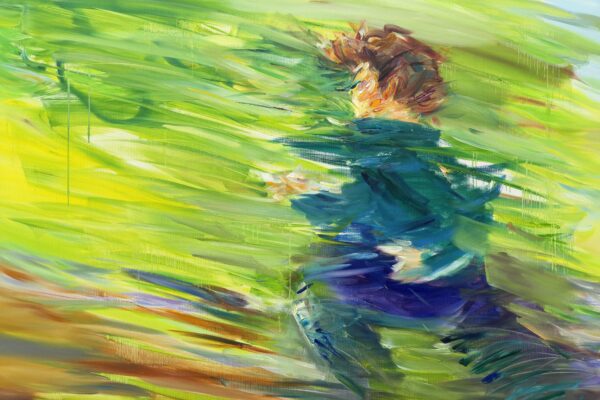Seurat Studies: Monitors and Printers
| [GALLERIES] Tang Contemporary Art
2021. 11. 27 – 12. 31
Xue Feng
Tang Contemporary Art is proud to present the first solo exhibition of Xue Feng (b.1973) in its Hong Kong gallery space. Curated by Cui Cancan, the show features twenty works created by Xue from 2012 to the present day, all exploring modern genres of impressionism and abstraction.
Since recent years, Xue Feng has started focusing on the possibility of rendering a two-dimensional space that could project a combination of the artist’s own state of mind, artistic practice, and the physical reality where he situates. To do so, Xue has become more ambitious with the use of abstraction – satiating canvases with gestural strokes and spots vertically or horizontally across the entire composition, and sometimes even practicing the Richter-style of rubbing and scraping paint. Thus, these paintings have transcended the endeavor of mere realistic representation, arriving at the pursuit of balance in visuality.

Stories have never been the center of Xue Feng’s work – he consciously minimizes the narrative element, in order to better convey the differences between images. Also, by repeatedly depicting the same subjects and forms, he tries to make the themes as monotonous as possible and the spaces as simple as possible, eventually preventing the viewer’s eye and mind from being distracted.
Xue Feng’s style of painting stems from Georges Seurat’s and Pointillism’s scientific, rational attitude towards color separation. As a Post-Impressionist, Seurat expanded from the Impressionist tradition of using natural light to observe and describe nature, while also contrarily rebelling against the industrial, mechanical, and design-oriented aesthetics that aimed for absolute composition and accuracy. The vitality that classical paintings gave nature thus ended with Seurat. Rather, Seurat transformed colors into dots of pigments, embarking upon a rational pursuit of abstraction and structure. Fields of scattered dots allowed the light and shadow of time to flow through cracks, subsequently creating endless possibilities.
Seurat influenced traditional painters like Vincent van Gogh, Paul Gauguin, and Henri de Toulouse-Lautrec in the 1880s, as well as the development of constructivism and cold abstraction. However, Seurat also separated the study of painting from art itself, which served as a source for a revolution in technology. Color separation and shading techniques are remarkably similar to the principles of the additive color model used in television and computer screens, as well as inkjet printing. Seurat could hence be considered the nineteenth century’s living inkjet printer.
Regardless of the subjects depicted, Seurat’s artistic philosophies and his influenced monitors and printers all construct a game for us to study about how subject matters could always dissolve into color, light, and shadow. These elements do not present an isolated event or individual; but are abstractions that bespeak joy, sorrow, indifference, and passion – common values to all of humanity.

Xue Feng was born in 1973, Zhejiang, China and currently lives and works in Shenzhen and Hangzhou, China. He is recognized as a promising painter of the new millennium generation. Building upon the Rococo style, he employs riotous painterly brushstrokes and experiments with the construction of space on canvas. These individualistic explorations have made remarkable contribution to the field of contemporary painting in China.
Tang Contemporary Art Hong Kong
10/F, H Queen’s, 80 Queen’s Road Central, Hong Kong
+852 2682 8289











